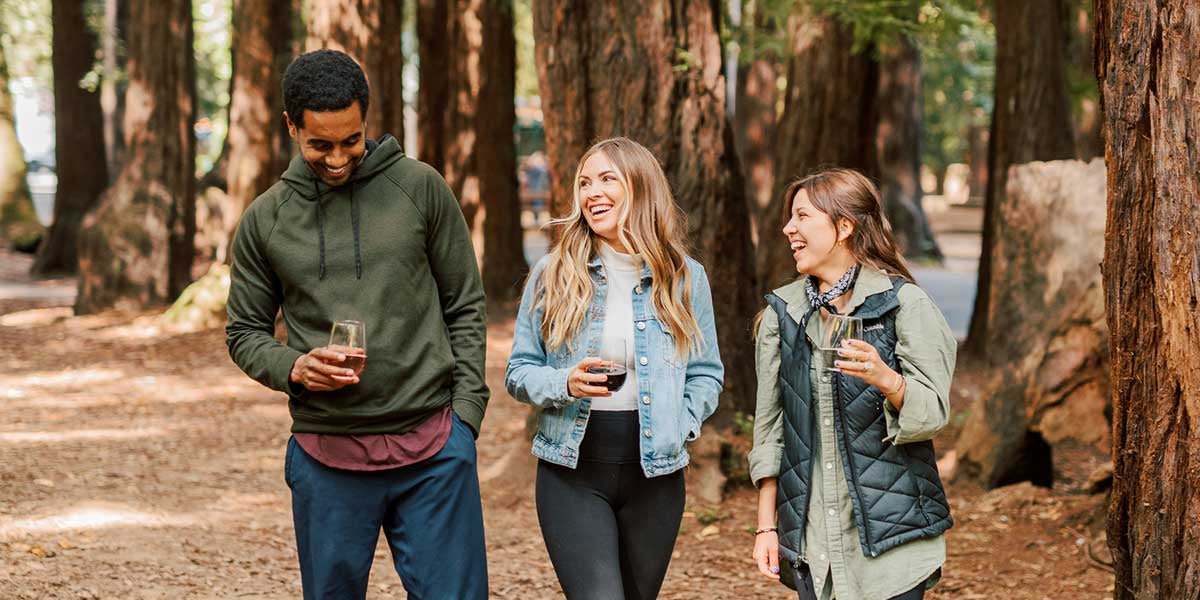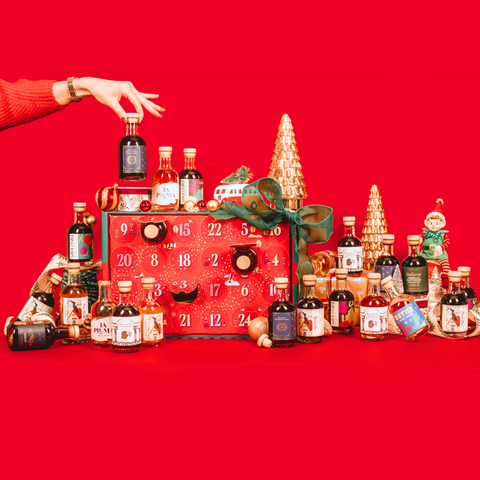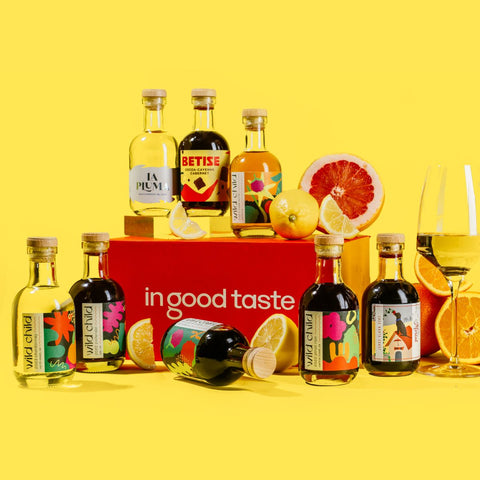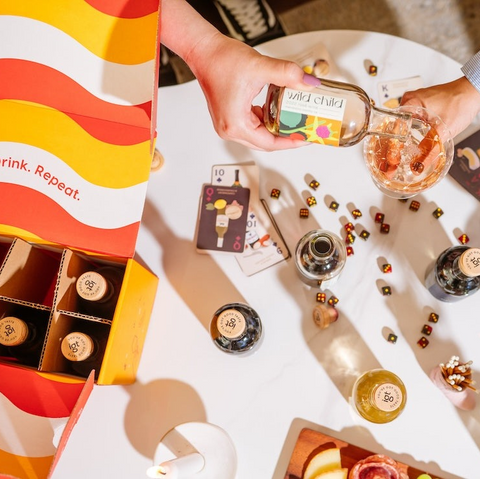Celebrating Wines from Walla Walla and Beyond
Washington is the new kid on the block when it comes to New World wines. But located on the protected eastern half of Washington State, the second-largest wine-growing region in the U.S. (behind only California). Most of Washington’s 60,000 acres of vineyards were planted in the 1970s and the grapevines are due to reach their peak maturity in the coming years.

Anyone who isn’t familiar with northwest wine would think that any efforts to grow would be thwarted by the notoriously rainy Seattle weather and unpredictable seaward storms. However, the Cascade and Olympic mountain ranges in the western part of the state stop clouds rolling in from the Pacific Ocean in a natural phenomenon called the Rain Shadow Effect. The eastern part of Washington State is the highest-altitude location to experience this effect in the New World.
While Washington’s vineyards are still considered “new” even when compared to New World vineyards in California and Australia, Washington State is a wine region to watch. The innovative technologies and pristine natural environment transpose themselves onto the wines. Add that to the fact that Washington has made a habit of combining Old World techniques with New World fruit and you get unique wines unlike anything produced in the more established parts of the wine world.

Washington Varietal Guide
At the moment, Washington is defined by diversity over consistency. Over 70 wine varietals are grown in a diverse range of soils and climates. Since most of the vines are between 30 and 60 years old, winegrowers are still experimenting with which grapes do best in which parts of the state. Washington State is an established producer of both Riesling and Red Blends, but recent efforts have brought other popular varietals to the forefront.
These wine varietals are familiar Old World grapes, but Washington’s unique terroir gives them a life of their own. About 59% of the varietals grown in Washington State are red, and the other 41% are white.

Washington Red Wine
Washington red wines feature primarily Syrah, Cabernet Sauvignon, Merlot, Malbec, Cabernet Franc, and Petit Verdot. Many of these are combined to create the popular Washington Red Blends.
Syrah has proven to be one of the most successful Washington red varietals. It thrives in a variety of environments and is produced in the style of the Northern Rhône. On its own, Syrah has a smoky richness that has long fascinated wine enthusiasts. The combination of earthiness and berry aromas provided by Washington’s terroir makes it one of the most popular varietals in the region. Pair a Washington Syrah with a do-it-yourself charcuterie board for a match made in heaven.
Cabernet Sauvignon from Washington mixes the best of Old World techniques with New World fruits. Many of the 100 Best Washington Wines feature this grape. Traditionally, Cabernet Sauvignon blends well with both Cabernet Franc and Merlot grapes. Washington Cabernets get better after a few years of aging since it takes time for complexity to develop.
Malbec is a well-known Argentinian grape that thrives in an arid, high-altitude wine region. Coincidentally, Washington State shares these qualities with Argentina, and has plenty of natural irrigation from snowmelt. Walla Walla has made use of these similarities to produce several dense, fruity, and acidic wines sure to please any fan of Malbec grapes. Many producers also use Malbec in their Red Blends.
Bordeaux Blends use a combination of Cabernet Sauvignon, Merlot, and Cabernet Franc, as well as the occasional Petit Verdot or Malbec. This blend – a signature of French wines – suits the current methods and known varietals of Washington wineries.
Washington Rosé Wine
Rosé is a relatively new venture for Washington winemakers, but some wineries are already having success. A Colombia Valley Rosé made with Syrah or Sangiovese will refresh your palate with fresh fruit flavors and bright acidity at half the price of a similar French-style rosé.
Sangiovese has long been heralded as an Italian red wine staple, but in Washington, the most popular use for this varietal is to make rosé! rosé’s made with Sangiovese tend to be dry with just a touch of sweetness. The grapes are picked early so the amount of sugar is low and the acidity is high. This results in a low-alcohol, palatable Rosé that has been growing in popularity throughout the Pacific Northwest wine regions.
Washington White Wine
The most notable Washington white wine is a dry Riesling, but Chardonnay, Pinot Gris, Semillon, and Sauvignon Blanc also do well. If the conditions are right, white varietals can also be used to create ice wines, a sweeter dessert-style wine that cleanses the palate after a big meal.
Riesling is the signature white grape of Washington State. The mean temperature of the Columbia Valley matches the great Riesling wine-growing regions in Alsace and Germany. The cool evenings are particularly important for preserving the acidity that makes these wines both balanced and elegant. Most Rieslings in Washington State are done in a dry to off-dry style.
Chardonnay in Washington is known for its delicate and crisp characteristics unlike the full-bodied Chardonnays produced in California. To add a bit of butteriness and vanilla, some wineries introduce a secondary malolactic fermentation.
Sauvignon Blanc & Semillon together have produced a Bordeaux-inspired full-bodied white wine that stands out among the mineral-driven Sauvignon Blancs from New Zealand and France.
Washington Terroir
Washington wine regions have flourished in the arid and semi-arid land east of the Cascade Mountains. Unlike the oceanic climate of western Washington, eastern Washington experiences 300 days of sun a year. Higher elevations create a better sun angle, similar to that of the great wine regions of Northern Europe. Too much sun would be a problem without manual irrigation practices. However this has the additional benefit of giving winemakers full control over the growing process.

A series of prehistoric cataclysms called the Missoula Floods created a layer of moderate to deep silt-loam over gravel or basalt bedrock. This creates well-drained soil perfect for viticulture.
Western Washington also experiences distinctive diurnal shifts (or dramatic temperature changes between night and day) which play a crucial role in creating natural acidity in Washington wine. Natural acid has a more integrated flavor than those added by the winery.
Out of 13 appellations and over 750 wineries, Walla Walla Valley and Columbia Valley deserve special recognition.

Walla Walla Valley has the highest concentration of wineries in Washington State. It can be found in the southern part of the state crossing over into Oregon. Syrah and Cabernet Sauvignon feature heavily among the wines produced in the Walla Walla Valley, supplemented by Malbec, Merlot, and Cabernet Franc.
Walla Walla wineries have gained a reputation for their red wines. Cabernet Franc’s popularity has grown in the past several years. Its spicy notes are well complimented by coffee and blueberry flavors. Walla Walla Merlot’s are known for their full-bodied and moderately tannic flavor, with notes of cherry and sweet spice.
Columbia Valley is the largest AVA (American Viticultural Area) in Washington. It covers a full third of Washington State’s landmass. Out of 70 wine varietals, five make up over 80% of this region’s production: Cabernet Sauvignon, Chardonnay, Riesling, Merlot, and Syrah.
Columbia Valley wine is the most recognized and varied of all of Washington’s wine-growing regions. The warm days and cool nights help preserve the grapes’ natural acidity and give wines grown in this area ripe fruit flavors and a sharp mouthfeel. A Columbia Valley Pinot Gris, for example, falls somewhere between a light Pinot Grigio and a full-bodied Alsatian Pinot Gris.
Other notable areas include the Yakima Valley and the Red Mountain Valley.
Yakima Valley is a sub-appellation of Columbia Valley and the oldest wine-growing region in the Pacific Northwest. This region is responsible for the growth of half of the Chardonnay and Riesling in the state. Reds from Yakima Valley tend to have soft tannins.
Red Mountain Valley is characterized by hotter temperatures. Hotter locations usually produce better reds than whites. Red Mountain Valley is known for its Cabernet Sauvignon, Syrah, and Merlot. The wines from Red Mountain Valley are robust, vibrant, and structured with lots of potential for aging.
To find the best vineyards in Washington State, take a look at these Washington wine maps. Washington is overflowing with vineyard tours and wine tasting opportunities so you are sure to find something to fit your taste.
What makes Washington wines so unique?
While most Washington vineyards are still in their infancy compared to those in France and Italy, Washington winemakers have found a niche creating unique wines with great value. The community of Washington wineries is progressive. They understand the value of working together to make the best tasting wine possible. Washington’s wine industry has made strides toward continued wine research by investing in Washington State University’s Ste. Michelle Wine Estates Wine Science Center. The research focuses on which locations work best for new vineyards, improving practices for current vineyards and wineries, managing viruses, and optimizing flavor profiles to make Washington wine more distinct. All investments by the Washington State vineyards are meant to produce quality grapes and better livelihoods for growers.

New World wines tend to have ripe fruit flavors, lower acidity, and a fuller body. By contrast, Old World wines are known for subtleties such as type of acidity and tannin structure. Washington wine seems to have made the best of both worlds. Winemakers' ability to grow a staggering 70 plus varieties allows them to experiment with both Old and New World techniques.
One of the ways they do this is by creating non-varietal bottlings. Bottles known by a varietal must contain over 75% of a single varietal – think of the wines you’ve seen with Cabernet Sauvignon or Merlot written in big letters on the label. In contrast, blended wines often contain many varietals in smaller percentages.
Blending varietals allows the winemaker to choose balance and age-worthiness over perfecting their technique. Winegrowers in France, Italy, and Spain have had hundreds of years to optimize the type of grape and technique used to create the best wine possible. Since many Washington vineyards are relatively new, they are still in the process of experimenting to find out which grapes and techniques work best at their vineyards.
Up-and-Coming Washington Wine
Get familiar with Washington State wine by experimenting! Host a tasting with our Cascade Wine Tasting flight to discover more of this region’s incredible variety. Our newest flight features many of the popular Columbia Valley wines, including red, white, and rosé. Tasting in a group can help you discern more flavors, textures, and scents than you would be able to identify on your own.
When tasting new wines, pay attention to the acidity, tannins, and ripe fruit flavors that make Washington wine unique. Serving temperature and the shape of your wine glass can also influence the smell and flavor of your wine. You may want to invest in a wine guide to reference as you taste to familiarize yourself with the region and the history of the wine while you taste it.
Washington may be new to the wine scene, but what they lack in experience, they make up for in innovation. Keep an eye on this wine region in the coming years as winemakers discover which varietals and techniques work best. And in the meantime, enjoy the variety and value that make this region exceptional.









